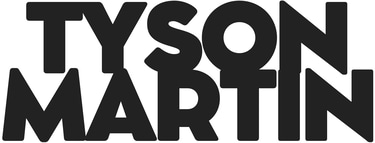Trust-at-Scale: Security’s Role in Supporting a Global, Values-Driven Brand
In a world where global reach meets personalized experience, trust isn’t just a byproduct of strong security — it’s the foundation for brand integrity. Today, the brands that win loyalty are the ones that make trust visible, consistent, and scalable.


Trust-at-Scale: Security’s Role in Supporting a Global, Values-Driven Brand
In a world where global reach meets personalized experience, trust isn’t just a byproduct of strong security — it’s the foundation for brand integrity. Today, the brands that win loyalty are the ones that make trust visible, consistent, and scalable. But how do you maintain that trust when your business spans continents, cultures, and compliance frameworks?
This is where the role of security becomes both expansive and deeply human. It’s not just about preventing incidents or maintaining uptime. It’s about building a "trust engine" — a consistent, values-driven system that empowers customers, employees, and partners to believe in the safety and integrity of every digital interaction.
What Does Trust-at-Scale Really Mean?
Trust-at-scale is the ability to deliver consistent, reliable, and ethically sound digital experiences across every touchpoint, regardless of geography or audience. It means:
Ensuring that customer data is protected in Copenhagen the same way it is in Chicago.
Delivering privacy experiences that feel personal but are grounded in global compliance.
Building internal cultures where security is not a department, but a shared responsibility.
It’s about turning principles into systems, and systems into habits.
The Shift from Control to Culture
For years, organizations approached security as a set of controls. Policies, technologies, audits. But as operations scale and decentralize, those controls alone aren’t enough. The differentiator now is culture.
When security is embedded into the values of a brand, it becomes easier to scale. Why?
Teams align on "why" security matters, not just "how".
Risk decisions are made with consistency, even when governance structures differ.
Local teams are empowered to uphold standards without waiting for top-down enforcement.
In other words: the stronger the security culture, the less you rely on micromanagement. Trust scales with clarity and autonomy.
Building the Trust Engine: Five Core Components
To support a values-driven brand globally, your security function must serve as a trust engine. Here's what that looks like:
1. Unified Risk Posture
Global organizations need a clear, shared understanding of what risk looks like. That doesn’t mean every region follows the same playbook—but it does mean they interpret risk through the same lens.
Use consistent risk categories and scoring methods
Develop global principles for data protection and incident response
Align third-party risk assessments across markets
2. Cultural Alignment, Not Cultural Cloning
You can't copy-paste policies across cultures and expect buy-in. The trust engine adapts to local norms without diluting standards.
Customize security awareness content for regional nuance
Empower local leaders to own implementation
Invite feedback loops to evolve practices without weakening posture
3. Decentralized Execution, Central Visibility
In fast-moving global teams, centralization can create bottlenecks. Instead:
Push ownership of controls to business units
Use dashboards to maintain oversight
Establish real-time reporting, not rear-view auditing
This model ensures agility without sacrificing accountability.
4. Brand-Level Transparency
Security should support brand trust, not stay hidden in the background.
Publish clear privacy and security commitments
Report publicly on risk management efforts
Train customer-facing teams to speak confidently about security
Customers want to know that you take their safety seriously. Show them.
5. Shared Learning Ecosystems
Global trust grows faster when regions learn from one another.
Host cross-regional tabletop exercises
Share playbooks and case studies internally
Create mentorship paths across markets
A culture of shared learning turns isolated wins into global best practices.
Scaling Trust Through Governance
Governance doesn’t have to be a constraint. When designed well, it becomes a channel through which culture and values travel.
Modern governance should:
Reflect your brand's values, not just your regulators'
Provide structure for innovation, not slow it down
Enable autonomy within a framework of accountability
By tying governance to mission, security leaders help their organizations grow with confidence.
The Executive Role in Trust-at-Scale
CISOs and technology executives sit at a unique intersection: strategy, operations, and reputation. In a global, values-led brand, their role is to:
Translate global risk into local action
Advocate for secure-by-design principles in product and customer experience
Influence leadership to treat trust as a differentiator, not a defensive stance
When executives model security as a strategic asset, it cascades through the organization.
Final Thoughts: Trust Is the Strategy
In today’s digital world, trust is the product. And the companies that scale trust effectively don’t just win market share—they build legacies.
That starts with security teams who see their work not as a technical function, but as a culture-building engine. Who partner with product, marketing, legal, and operations to create a unified risk posture and a shared sense of responsibility.
At scale, trust is built by design. And when security leads with purpose, trust doesn’t just follow. It compounds.
About the Author
Tyson Martin is a cybersecurity and digital trust leader who helps global brands align security with purpose, build scalable governance models, and foster trust at every level of the enterprise.
